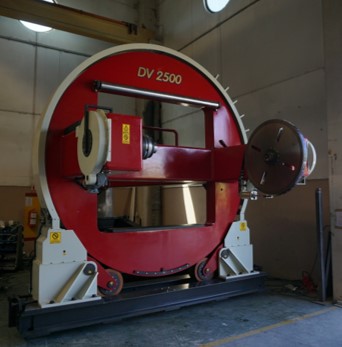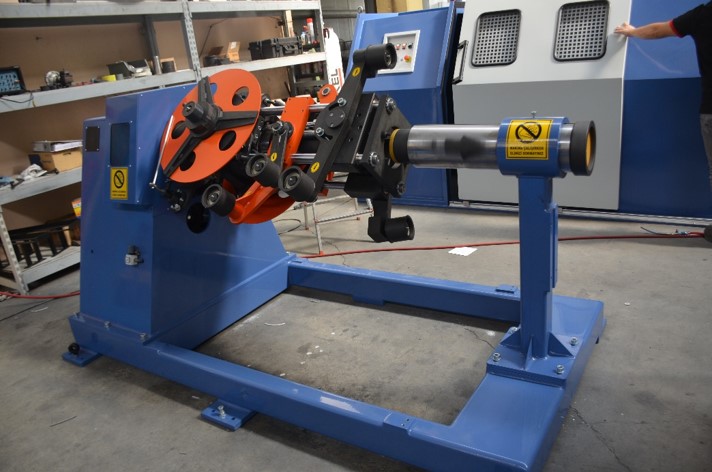Wire and cable machinery serves as a cornerstone of modern infrastructure, powering the production of vital components used across telecommunications, electrical networks, and diverse industrial sectors. This in-depth guide explores the different types of wire and cable machinery, their key components, manufacturing methods, and the cutting-edge innovations that continue to shape the industry.

You may be interested in this article. What Are the 5 Latest New Developments in Wire Machinery?
Types of Wire and Cable Machinery
Extruders
Extruders are pivotal in the wire and cable manufacturing process. These machines melt and shape the raw materials, typically polymers, into continuous shapes that form the insulation and jacketing of wires and cables. By forcing the molten material through a die, extruders create a uniform coating around the conductive core, ensuring protection and performance.
Drawing Machines
Drawing machines play a crucial role in reducing the diameter of metal rods and wires. This process involves pulling the metal through a series of dies, decreasing its size and increasing its length. The drawing process enhances the wire’s mechanical properties, making it suitable for various applications, from electrical wiring to cable production.
Stranding Machines
Stranding machines twist individual wires together to form a single, stronger strand. This process is essential for creating cables that require flexibility and strength. By intertwining multiple wires, these machines produce cables that can withstand mechanical stresses and provide reliable performance in demanding environments.
Armoring Machines
Armoring machines add a protective layer to cables, enhancing their durability and resistance to external factors such as physical damage and environmental conditions. This layer is often made of metal or other robust materials, ensuring the cable’s longevity and reliability in harsh conditions.
Cutting and Winding Machines
Cutting and winding machines are vital for preparing finished cables for shipment and installation. These machines accurately cut cables to the desired length and wind them into coils or spools, facilitating easy handling and transportation.
Components of Wire and Cable Machinery
Motors and Drives
Motors and drives are the heart of wire and cable machinery, providing the necessary power and control for various operations. These components ensure precise movement and consistent performance, critical for maintaining product quality and efficiency.
Control Systems
Control systems oversee the entire manufacturing process, from material feeding to final output. Advanced control systems enable automation, enhancing productivity and reducing the likelihood of errors. They also allow for real-time monitoring and adjustments, ensuring optimal performance.
Heating and Cooling Systems
Heating and cooling systems regulate the temperature during the manufacturing process. Proper temperature control is essential for material integrity and product quality. Heating systems melt materials for extrusion, while cooling systems solidify and stabilize the final product.

kağıt bantlama makinası paper taping machine
Manufacturing Process of Wires and Cables
Material Selection
The manufacturing process begins with selecting appropriate materials, including conductive metals like copper or aluminum and insulating materials such as polymers. The choice of materials depends on the intended application and required properties of the final product.
Wire Drawing Process
The wire drawing process involves reducing the diameter of metal rods or wires through a series of dies. This step enhances the wire’s strength and flexibility, making it suitable for various uses. The drawn wire is then annealed to relieve internal stresses and improve ductility.
Insulation and Jacketing
Insulation and jacketing involve coating the drawn wire with a protective layer of polymer or other insulating material. This step ensures electrical isolation and protects the wire from environmental factors. Extruders are commonly used for this purpose, providing a uniform and durable coating.
Stranding and Armoring
In the stranding process, individual wires are twisted together to form a single strand, which may be further stranded with additional wires. Armoring adds a protective layer, enhancing the cable’s durability and resistance to external influences. These processes are crucial for producing robust and reliable cables.
Quality Control and Testing
Quality control and testing are integral to ensuring the performance and safety of wires and cables. Various tests, including electrical, mechanical, and environmental assessments, are conducted to verify that the products meet industry standards and customer specifications.
Technological Advancements in Wire and Cable Machinery
Automation
Automation has revolutionized the wire and cable industry, improving efficiency, accuracy, and consistency. Automated systems streamline the manufacturing process, reduce labor costs, and minimize human error. They also enable real-time monitoring and adjustments, enhancing overall productivity.
Energy Efficiency
Energy efficiency is a growing concern in the wire and cable industry. Modern machinery incorporates energy-saving technologies, reducing power consumption and environmental impact. Energy-efficient motors, drives, and control systems contribute to cost savings and sustainability.
Advanced Materials
The use of advanced materials, such as high-performance polymers and alloys, enhances the properties of wires and cables. These materials offer improved electrical conductivity, mechanical strength, and environmental resistance, meeting the demands of modern applications.

drum twister hattı assembling and armouring line
Maintenance and Safety in Wire and Cable Machinery
Routine Maintenance
Routine maintenance is essential for ensuring the longevity and performance of wire and cable machinery. Regular inspections, lubrication, and part replacements prevent unexpected breakdowns and maintain operational efficiency.
Safety Protocols
Safety protocols are critical for protecting workers and equipment. Proper training, protective gear, and safety measures minimize the risk of accidents and injuries. Adhering to industry standards and regulations ensures a safe working environment.
Troubleshooting Common Issues
Troubleshooting common issues involves identifying and resolving problems that may arise during the manufacturing process. Understanding the root causes of issues, such as material defects or mechanical failures, enables timely repairs and reduces downtime.

çelik bantlama makinası steel taping machine
Market Trends and Future of Wire and Cable Machinery
Growth Drivers
Several factors drive the growth of the wire and cable industry, including the increasing demand for telecommunications, renewable energy, and infrastructure development. Technological advancements and the adoption of smart grid systems also contribute to market expansion.
Challenges
The industry faces challenges such as fluctuating raw material prices, stringent regulations, and the need for continuous innovation. Addressing these challenges requires strategic planning, investment in research and development, and adaptability to changing market conditions.
Future Prospects
The future of wire and cable machinery looks promising, with ongoing advancements in automation, materials, and energy efficiency. The adoption of smart manufacturing practices and the development of next-generation cables will drive the industry’s growth and evolution.
Conclusion
Wire and cable machinery is essential for producing high-quality wires and cables that power our world. From extruders to stranding machines, each type of machinery plays a crucial role in the manufacturing process. As technology advances, the industry continues to evolve, offering innovative solutions and meeting the growing demands of various sectors. Embracing automation, energy efficiency, and advanced materials will pave the way for a sustainable and prosperous future.
FAQs
1. What are the main types of wire and cable machinery?
The main types of wire and cable machinery include extruders, drawing machines, stranding machines, armoring machines, and cutting and winding machines.
2. How do extruders work in cable manufacturing?
Extruders melt and shape raw materials into continuous shapes that form the insulation and jacketing of wires and cables by forcing the molten material through a die.
3. What safety measures are essential for operating wire and cable machinery?
Essential safety measures include proper training, wearing protective gear, adhering to safety protocols, and conducting regular equipment maintenance.
4. How is automation impacting the wire and cable industry?
Automation improves efficiency, accuracy, and consistency in the manufacturing process, reducing labor costs and minimizing human error while enhancing overall productivity.
5. What are the future trends in wire and cable machinery?
Future trends include advancements in automation, energy efficiency, and the use of advanced materials, driving the industry’s growth and evolution.



